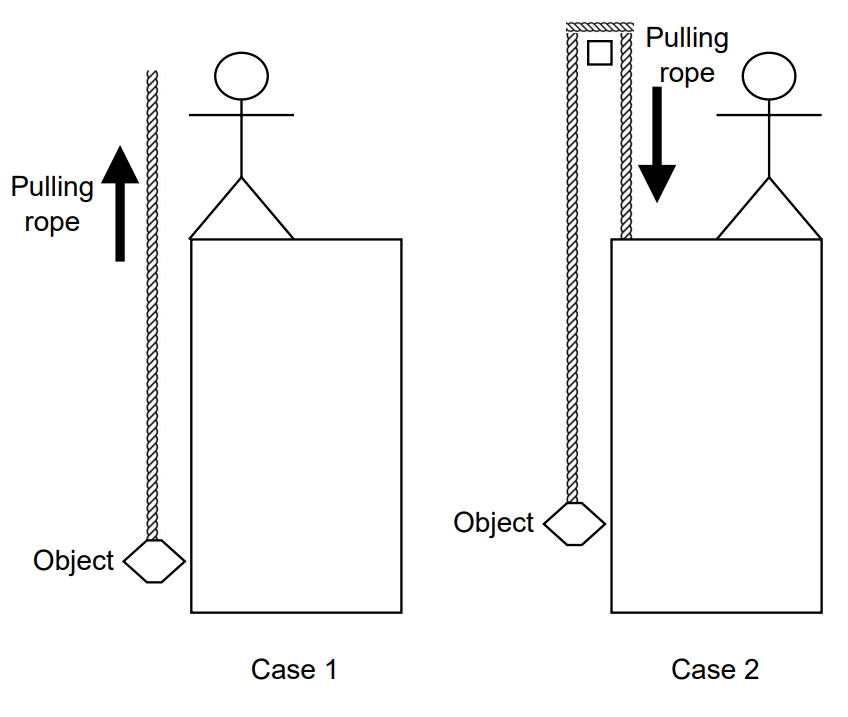Whenever I pull an object from a rope or cable, the weight never really feel the same depending on the rope length, and I would like to understand why, and learn more about the maths behind this.
So, first let's say there is an object of weight m at the end of a rope of length l. This rope is vertical and needs to be pulled up. In this case, how are all the variables related?
In the second case, what and how would the relations change if the rope goes over some kind of bar so that the rope needs to be pulled down to bring the object up?
In other words, how does the length of the rope impact the required force to pull the object at its end?
EDIT: In both cases the rope is very light and does not change much with the length of the rope. For simplification we can say the weigth of the rope is always the same.

